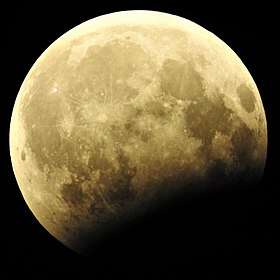October 1949 lunar eclipse
A total lunar eclipse took place on October 7, 1949.
| Total Lunar Eclipse October 7, 1949 | |
|---|---|
| (No photo) | |
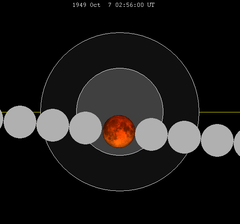 The moon passes west to east (right to left) across the Earth's umbral shadow, shown in hourly intervals. | |
| Series | 126 (42 of 72) |
| Duration (hr:mn:sc) | |
| Totality | |
| Partial | |
| Penumbral | |
| Contacts | |
| P1 | UTC |
| U1 | |
| U2 | |
| Greatest | |
| U3 | |
| U4 | |
| P4 | |
Visibility
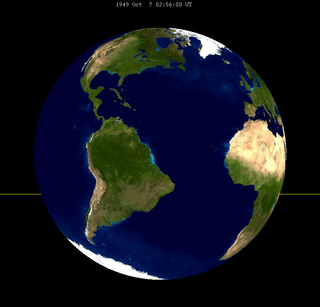
Related lunar eclipses
Lunar year series
| Descending node | Ascending node | |||||
|---|---|---|---|---|---|---|
| Saros | Date Viewing |
Type Chart |
Saros | Date Viewing |
Type Chart | |
| 111 | 1948 Apr 23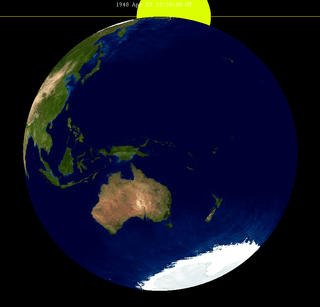 |
Partial |
116 | 1948 Oct 18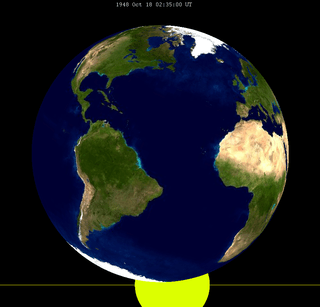 |
Penumbral | |
| 121 | 1949 Apr 13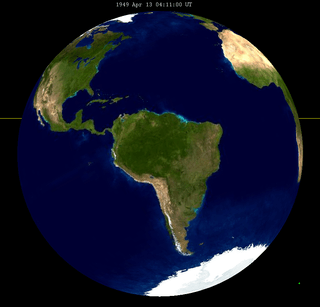 |
Total |
126 | 1949 Oct 07 |
Total | |
| 131 | 1950 Apr 02 |
Total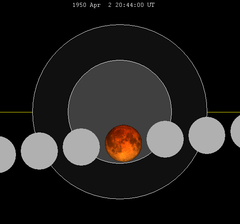 |
136 | 1950 Sep 26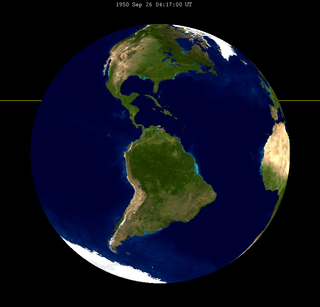 |
Total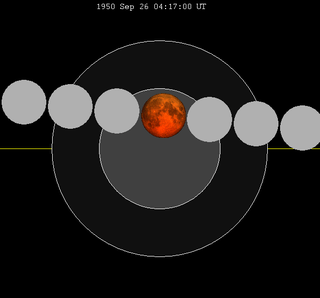 | |
| 141 | 1951 Mar 23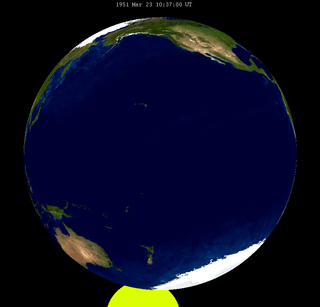 |
Penumbral |
146 | 1951 Sep 15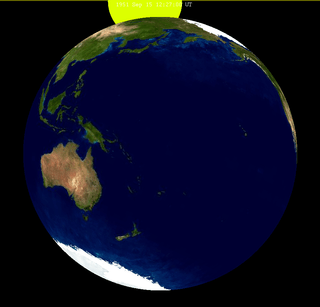 |
Penumbral | |
Saros series
Lunar Saros series 126, repeating every 18 years and 11 days, has a total of 70 lunar eclipse events including 14 total lunar eclipses. Solar Saros 133 interleaves with this lunar saros with an event occurring every 9 years 5 days alternating between each saros series.
First Penumbral Lunar Eclipse: 1228 Jul 18
First Partial Lunar Eclipse: 1625 Mar 24
First Total Lunar Eclipse: 1769 Jun 19
First Central Lunar Eclipse: 1805 Jul 11
Greatest Eclipse of the Lunar Saros 126: 1859 Aug 13, lasting 106 minutes.
Last Central Lunar Eclipse: 1931 Sep 26
Last Total Lunar Eclipse: 2003 Nov 09
Last Partial Lunar Eclipse: 2346 Jun 05
Last Penumbral Lunar Eclipse: 2472 Aug 19
1901-2100
2057 Dec 11
2075 Dec 22
2094 Jan 01
Half-Saros cycle
A lunar eclipse will be preceded and followed by solar eclipses by 9 years and 5.5 days (a half saros).[1] This lunar eclipse is related to two total solar eclipses of Solar Saros 133.
| October 1, 1940 | October 12, 1958 |
|---|---|
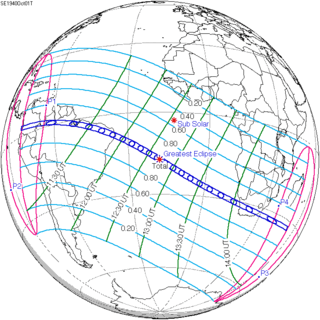 |
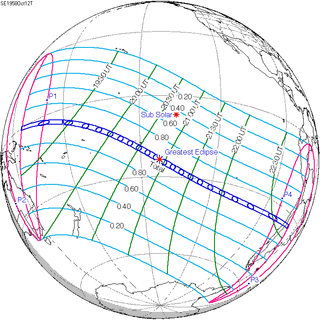 |
See also
- List of lunar eclipses
- List of 20th-century lunar eclipses
Notes
- Mathematical Astronomy Morsels, Jean Meeus, p.110, Chapter 18, The half-saros
